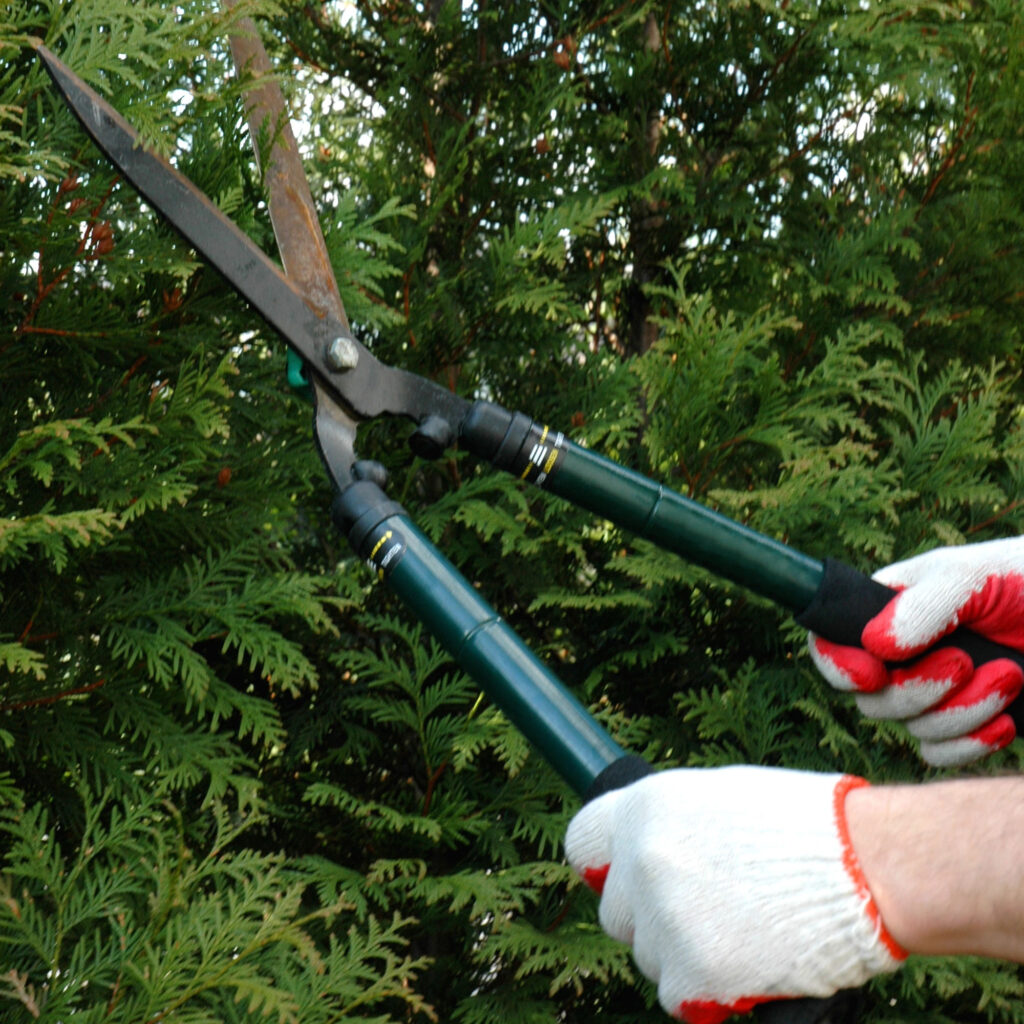TREE YOU, TREE ME, TREE US TOGETHER (APOLOGIES TO LIONEL RITCHIE)
With the advent of fall, or as more accurately stated in Texas “Drop” (when all the trees get together and fling their leaves off one week at the most inconvenient time between Thanksgiving and Christmas) people begin to see where neighbors’ bushes or tree limbs may be overhanging their property. The temptation is to fire up that battery or gas-powered trimmer and have at it. But there are some things to consider before creating that sawdust.
Trees can enhance the beauty of any neighborhood, but they can also cause conflicts, especially when branches overhang a neighbor’s property. In Texas, knowing your rights and responsibilities when dealing with tree branches that cross property lines is crucial to avoid legal disputes.
In this blog, we’ll discuss the key legal concepts of encroachment and trespass, and explain the rules for trimming a neighbor’s tree in the Lone Star State.

What is Encroachment?
Encroachment refers to the intrusion of something (such as a structure, fence, or in this case, tree branches) from one property onto another without permission. Encroachment can sometimes lead to disputes between neighbors, especially if the object in question causes damage or interferes with the use of the property. Overhanging tree branches are a common form of encroachment that often sparks these conflicts.
Understanding Trespass
Trespass occurs when someone unlawfully enters or interferes with another person’s property. This doesn’t necessarily require a physical entry by a person; for example, if you cut down a tree on your neighbor’s property without permission, you could be liable for trespass.
In the context of trimming tree branches, understanding trespass is vital to avoid stepping over legal boundaries. Cutting overhanging branches is permitted under Texas law (which we’ll explore shortly), but trespassing on your neighbor’s land to do so without permission could lead to legal repercussions.
General Texas Rule on Trimming Overhanging Branches
In Texas, property owners have the right to trim the portions of tree branches that extend over their property line. However, there are specific guidelines that need to be followed to ensure that you are within your rights:
You Can Trim Overhanging Branches
Generally, and I mean generally, under Texas law, you have the right to trim branches of a neighbor’s tree that extend onto your property. However, your trimming must not extend beyond the property line. This means that while you can cut the portions that encroach onto your land, you cannot cross into your neighbor’s property to trim the tree without their permission—doing so would be trespassing.
And here is “the but.”
If this tree is of great value to the neighbor, perhaps it is a 200-year oak that great great great grandpa planted, or of neighborhood value, you may not be able to trim its branches without the neighbor’s or the HOA’s permission. Yes, you have that correct. Arcane thought it is, a neighbor can file an injunction against your trimming the tree or bushes if he/she or HOA can prove that it existed prior to your moving in and has value that would be destroyed if it was trimmed. Now in this case, if you don’t ask before trimming you could be liable for not only the diminished value of the tree, but even the diminished market value of the neighbor’s land.
Additionally, if you just decide to hop the fence or whatever on to the land or your neighbors and trim away, he can sue you for damage entering your property.
And last, roots. Be very careful here. Because if you trim roots and it kills the tree on the neighbor’s property, you guessed it, you may be liable.
BUT WAIT ONE SECOND. THEIR TREE/BUSH IS CAUSING MY HOUSE TO HAVE DAMAGE, I CAN’T CUT THE OFFENDING BRANCH?!
The answer is a wonderful it depends. Mostly yes, you can trim the offending branch if you have damage, such as ants or the branch breaking your gutters off. So, if a neighbor’s tree causes damage to your property, such as broken branches falling on your roof or roots damaging your driveway, you may have grounds to recover the costs of repair. It’s generally best to handle these situations amicably, but if a dispute arises, consulting with a legal professional versed in real estate litigation (such as our firm Sprigg-Novak Law) can help determine the best course of action.
But as you can see, Texas law on tree branches is sort of all over the place. The best thing is to follow these steps:
Know the Property Line:
1.) Make sure you actually know the boundaries of your land. Trust us, many people “know” what the property line is, but when it is actually surveyed, it turns out that both neighbors may be wrong. If you really believe you have a encroachment issue, it may be worth the investment to have your property lines resurveyed and MARKED. Nowadays they use lasers and satellites and they are very very accurate. You wont win at law if you actually are cutting on your neighbor’s property.
This may be a City or HOA issue:
2.) If the offending branches are pushing up against a power line, you may want to call the city that you live in for their utility department to make the cuts. This saves you from being liable, and will be free of charge.
3.) HOAs may have rules about cutting down or trimming bushes. Check with their architecture committee rules. The HOA may be able to intervene in the matter. Also, Some HOAs can be vegetation dictators. You want to check to make sure that you can cut to a certain length, type of vegetation etc. Violations of HOA rules come with financial penalties, so its best to check and not guess.
Communicate with Your Neighbor:
4.) Before taking any action, it’s always wise to discuss the issue with your neighbor. A polite conversation can prevent misunderstandings and may even lead to an agreement on how to handle the tree. We have so many cases which could be solved by two neighbors talking about the problem. But we have seen that many, many other issues over the years between neighbors crowd into the branch issue and we have a lawsuit. In one case, the bad blood started in grade school between neighbors next to each other for 40 years. “Don’t you enter my property!” “Well then cut your $$%^ tree so it doesn’t hit my house!!” “I might could consider it if your brother had taken me to prom like he promised !!(in 1973)” Yes, I’m sure you get the picture…
Consider Hiring a Professional Arborist:
5.) It is more reassuring to a neighbor if the offending tree or bushes are trimmed by a professional. If the overhanging branches are high up or belong to a large tree, hiring a professional arborist is a healthy choice. This ensures that the trimming is done safely and without causing harm to the tree, protecting you from liability.
Document the Encroachment:
6.) In case there is a dispute later, it’s a good idea to take photos or videos of the overhanging branches. This documentation can help if you need to explain the situation to your neighbor or, in a worst-case scenario, present evidence in court.
Call Sprigg-Novak Law

In Texas, property owners have the right to protect their land from encroaching tree branches, but this right comes with certain responsibilities. By understanding the laws of encroachment and trespass, and following the proper steps, you can address overhanging branches without infringing on your neighbor’s rights. Always communicate with your neighbor and act responsibly to maintain both your property and your relationship.
